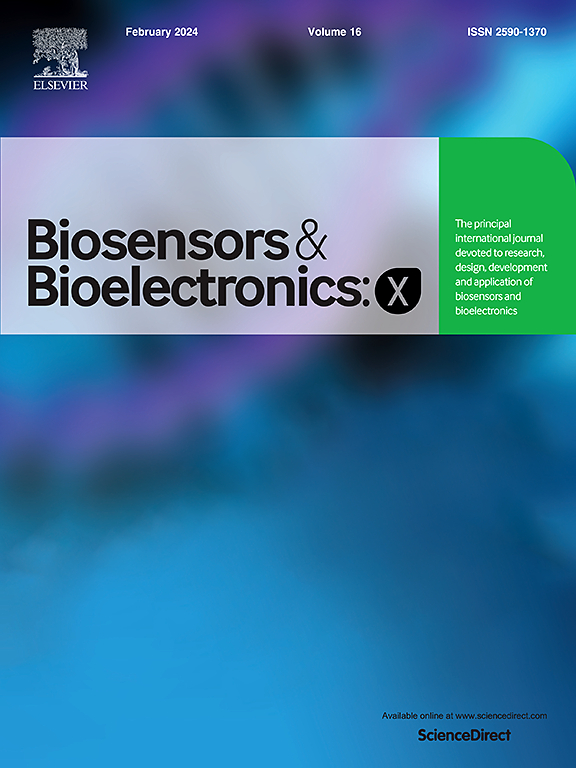丙烯酸酯/氧化石墨烯复合膜光学微腔相对湿度传感器通过泵浦检测技术提高了灵敏度
IF 10.61
Q3 Biochemistry, Genetics and Molecular Biology
引用次数: 0
摘要
提出了一种利用泵浦检测技术提高灵敏度的丙烯酸酯/氧化石墨烯复合膜光学微腔相对湿度传感器。丙烯酸酯/氧化石墨烯复合薄膜作为开放光学微腔的敏感膜和反射膜,通过3D打印在单模光纤端面上制备。采用泵浦检测技术提高了传感器的灵敏度。实验结果表明,在没有980 nm泵浦光的情况下,其灵敏度仅为151.11 pm /%RH。相比之下,引入980 nm泵浦光后,其灵敏度明显提高,灵敏度达到未泵浦传感器的2.4倍。湿度响应时间和恢复时间分别为0.32 s和1.40 s,具有快速响应特性。在实际应用测试中,该传感器可有效区分正常、快速、缓慢和呼吸暂停呼吸模式,显示出在医疗和运动相关呼吸监测方面的强大潜力。本文章由计算机程序翻译,如有差异,请以英文原文为准。
Acrylate/GO composite film enabled optical microcavity relative humidity sensor with enhanced sensitivity by pump-detection technique
An acrylate/graphene oxide (GO) composite film enabled optical microcavity relative humidity (RH) sensor with enhanced sensitivity by pump-detection technique is presented. An acrylate/GO composite film serves as both the sensitive film and reflection film of an open optical microcavity, which is fabricated by 3D printing on the end face of a single-mode fiber. A pump-detection technique is used to improve the sensitivity of the sensor. Experimental results show that its sensitivity is only 151.11 p.m./%RH without the 980-nm pump light. In contrast, its sensitivity is significantly improved after introducing the 980-nm pump light, and its sensitivity reaches 2.4 times as much as that of the unpumped sensor. Moreover, it exhibits fast response characteristics with humidity response time and recovery time of 0.32 s and 1.40 s, respectively. In real-world application tests, the sensor effectively distinguishes normal, rapid, slow, and apnea breathing patterns, demonstrating strong potential for medical and sports-related respiratory monitoring.
求助全文
通过发布文献求助,成功后即可免费获取论文全文。
去求助
来源期刊

Biosensors and Bioelectronics: X
Biochemistry, Genetics and Molecular Biology-Biophysics
CiteScore
4.60
自引率
0.00%
发文量
166
审稿时长
54 days
期刊介绍:
Biosensors and Bioelectronics: X, an open-access companion journal of Biosensors and Bioelectronics, boasts a 2020 Impact Factor of 10.61 (Journal Citation Reports, Clarivate Analytics 2021). Offering authors the opportunity to share their innovative work freely and globally, Biosensors and Bioelectronics: X aims to be a timely and permanent source of information. The journal publishes original research papers, review articles, communications, editorial highlights, perspectives, opinions, and commentaries at the intersection of technological advancements and high-impact applications. Manuscripts submitted to Biosensors and Bioelectronics: X are assessed based on originality and innovation in technology development or applications, aligning with the journal's goal to cater to a broad audience interested in this dynamic field.
 求助内容:
求助内容: 应助结果提醒方式:
应助结果提醒方式:


